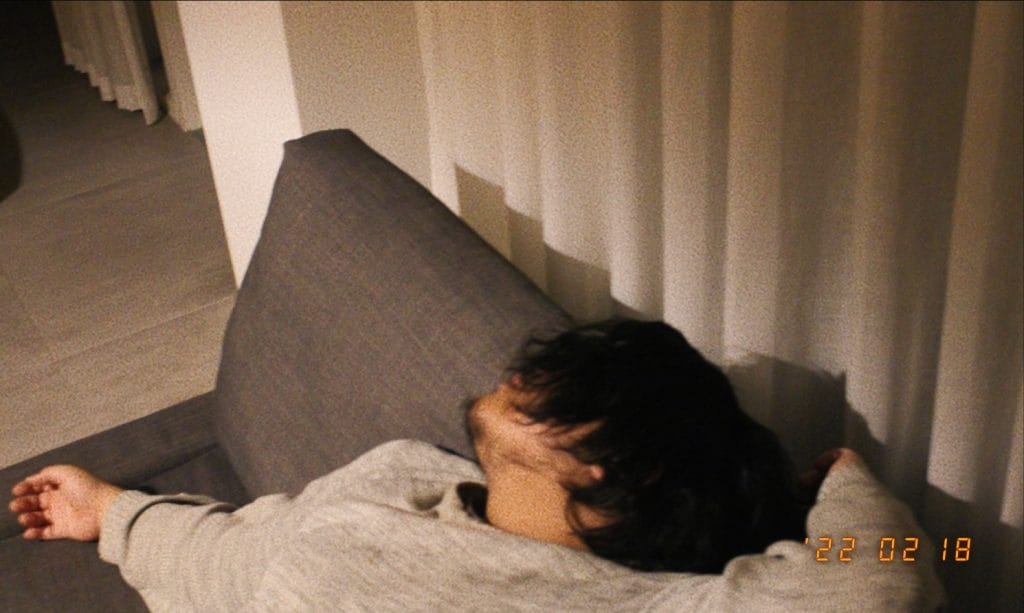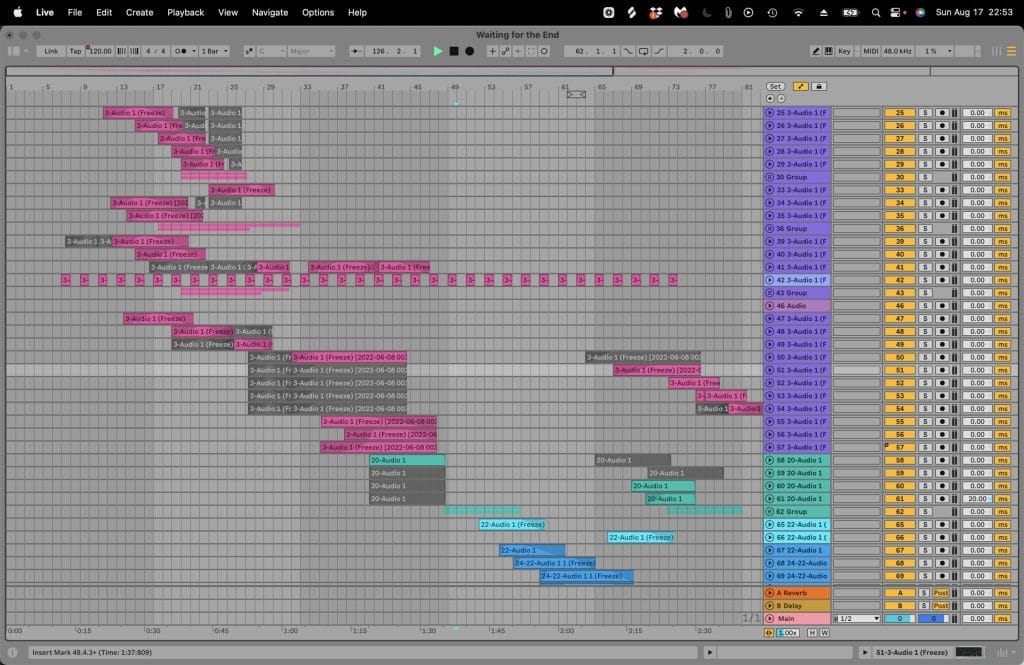Factor Eight has carved out a unique space in electronic music by building entire arrangements out of his own voice. His new single Waiting For The End, released on June 13, takes that approach to its most personal place yet. Written during the close of a long-term relationship, the track channels raw emotion into layered vocal recordings reshaped into basslines, harmonies, and textures. It is an intimate process of creation that mirrors the song’s themes of grief, transition, and acceptance.
The accompanying video, directed by Alexander Willems, reinforces that vision through movement and stark visual contrasts. Scenes from Factor Eight’s Saskatoon hometown are set against atmospheric studio shots, with contemporary dance acting as a stand-in for the emotions that words cannot fully express. This stripped-back approach, devoid of dialogue or lyrics, allows the weight of the music and imagery to carry the message.
For this feature, Factor Eight walks through the tools that bring his vocal-only productions to life. From shaping and distorting recordings with EQ Eight and Saturator, to pushing Ableton’s audio warping far beyond its conventional use, he outlines the techniques that gave Waiting For The End its form. His focus on limitation as a creative driver runs throughout, showi
VOICE
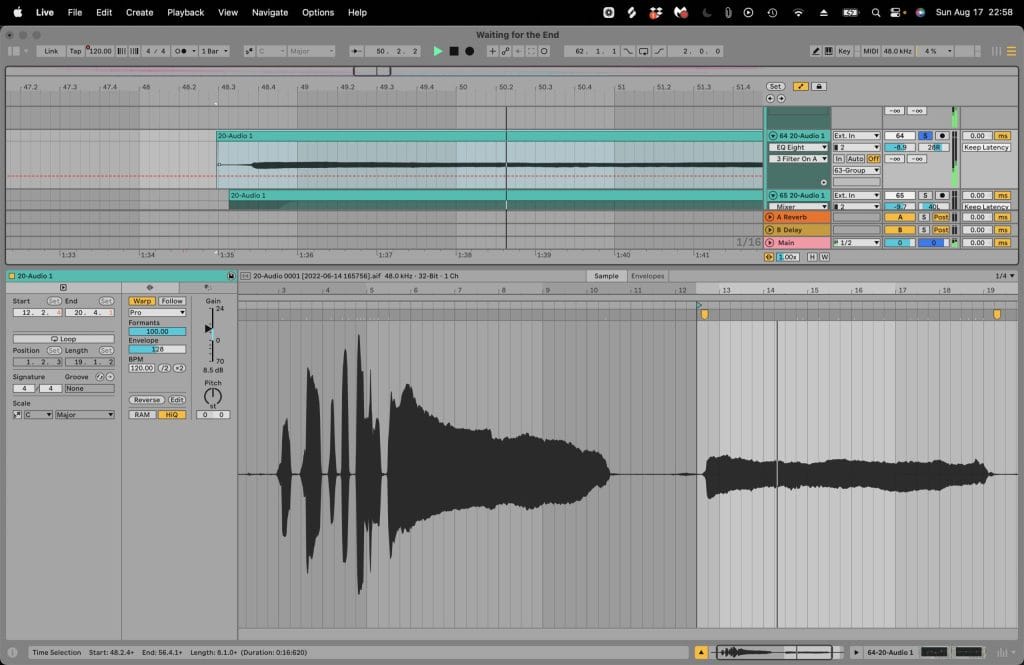
All of my music is created entirely with my voice. I record using a tube condenser microphone and then digitally contort my voice into every component of the track arrangement. The initial recording can be anything from a simple “ooo” or “ahh”, to pitch bends, beatboxing, screaming or yelling.
I primarily use built-in Ableton plugin’s to contort the voice into the various components of the song. Ableton’s built-in audio warping algorithms are quite central to my production process. I will use different warp modes for different purposes, e.g. typically low formant complex pro for pitching and layering tones to create chords. However, there are really no “rules” per se in my process, as I am always leading with my gut and trusting what feels right in the moment. While I do have typical ‘go-to’ trusted methods, I purposefully break these rules in the spirit of experimentation.
By limiting myself to a single type of sound, I am forced to be creative in new ways to achieve the desired result. Rather than being able to simply reach for an existing sample to fill the need in the moment, I am required to adapt, and in this case, manipulate my voice in new and creative ways to achieve the required and desired sound. Creative restriction like this can be a constructive way to facilitate artistic exploration and growth.
EQ Eight
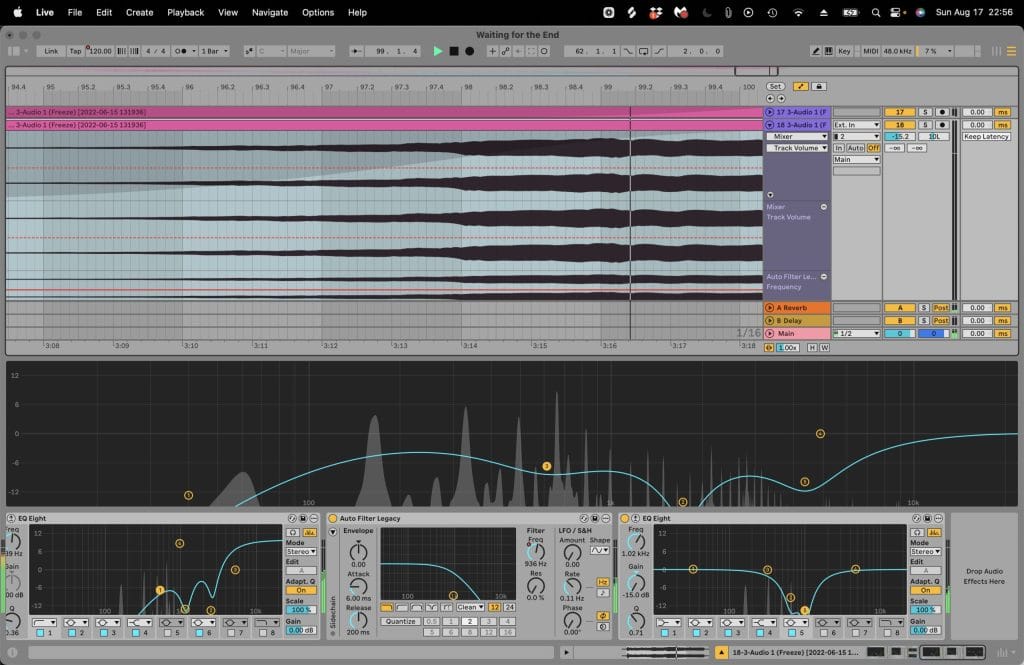
EQ Eight is Ableton’s built in eight-band parametric equalizer. It’s easy on the CPU, has real-time visual feedback, and has some useful advanced features like mid/side and left/right EQing.
I used to be really cautious with EQ out of a sort of misplaced respect; apprehensive to make any drastic moves, almost as if I would be tarnishing the sonic sanctity of the original sound. I now treat EQ like using my hands in molding audio-made clay. I initially play and experiment until something catches my ear, then slowly tweak away until the desired sound is achieved. Of course, EQ is irreplaceable in the mixing stage of production, but re-framing EQ as a tool in sound design changed my perspective and set me free, in a way.
I think we shouldn’t be afraid to repurpose pug-ins for different uses. Flip switches, turn knobs, do the opposite of what you usually would do. EQ is a perfect example of ways that we might unknowingly limit ourselves in our production process. Rather than constantly seek out new sounds to fill spaces and roles in a piece, experimenting with ways to repurpose existing sounds can reap new, exciting, and albeit unheard of results. For me, EQ was and is a plug-in that allowed me to do exactly that, turning a creative blindspot into sonic opportunity.
Saturator
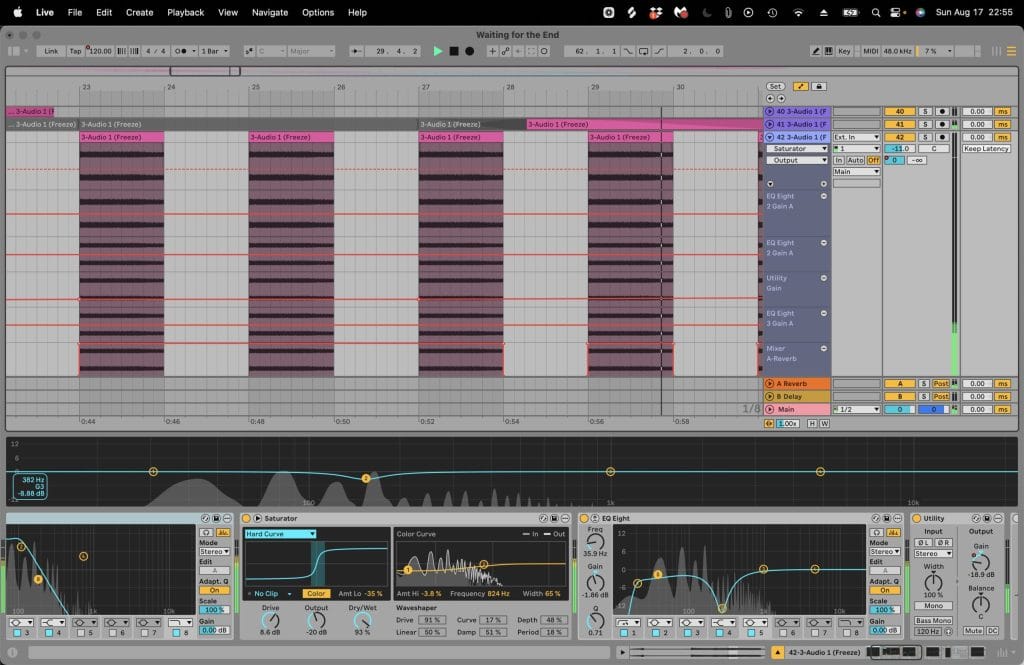
Ableton’s Saturator is a built-in distortion and harmonic excitement tool. Being native to Ableton’s production tool-kit, it’s also easy on the CPU and has a fairly simple, user-friendly UI.
I use saturator in both sound design and mixing stages of my process. Saturator has various modes that lend to creating anywhere from subtle harmonic elevation, to complete transient destruction, and everywhere in between. When coupling this tool with EQ and transient shaping, saturator can produce beautifully unique sonic results, from sounds that are unrecognizable to their original form, to subtle halos of warmth or fuzz to make things shine and cut through the mix.
Being willing to take sounds to their extreme limits with distortion using a plug-in as rudimentary as Ableton’s built-in saturator can lead to unique results. When making music, we start from source audio that has various appealing characteristics, otherwise we wound’t have chosen the sound in the first place. However, these characteristics can inadvertently limit us in the process and pursuit of creating something fresh. I think it’s important to dedicate a generous amount of time toward experimentation, rather than always falling back into tried and true patterns. The latter can hinder what otherwise would mean grater artistic growth, or blossoming of something new and beautiful.
Audio Warping
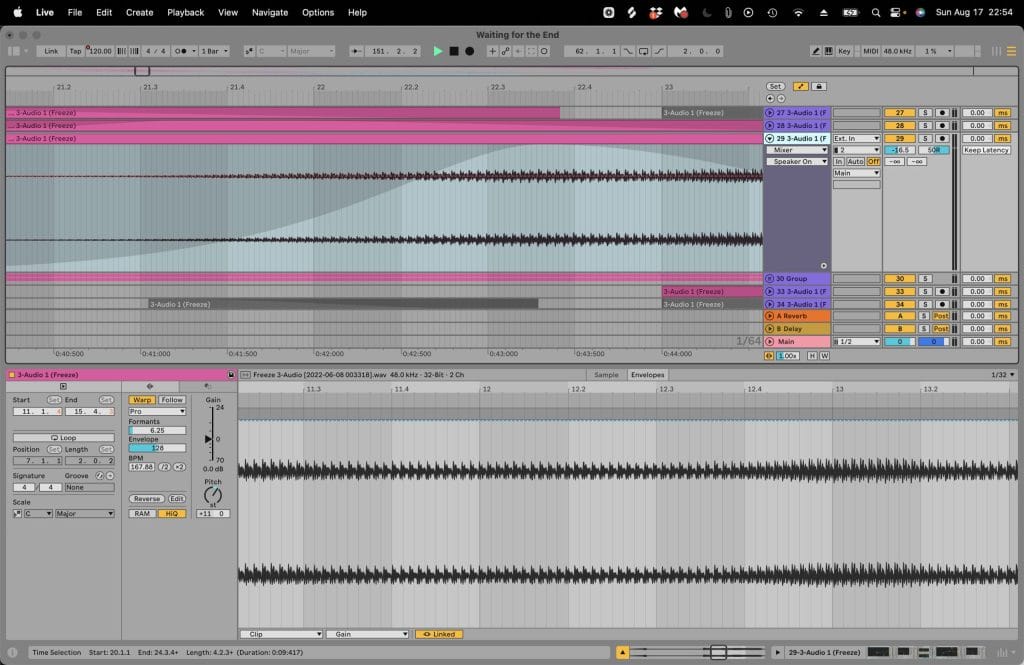
Ableton’s audio warping is a built-in DAW feature that allows you to manipulate timing and tempo of audio clips. Affixing anchor points called ‘markers’ allows the user to compress or stretch specific portions of the clip. Different warping algorithms or ‘modes’ produce different sounds, and are typically catered toward different use applications, e.g. beat warping vs formant pitch shifting.
While Ableton’s audio warping feature is typically meant to alter timing or tempo, I primarily use this feature as a means to alter the sonic quality or timbre of a given sound. There is a use case of audio warping where we alter timing, tempo, or pitch while aiming to preserve the original character of the sound as closely and transparently as possible. Ableton’s different warping algorithms have a sonic signature that can be recognizable to experienced producers familiar with Ableton, and so in certain settings and applications it can be advantageous to mask this signature in an effort to hear more of the original sound rather than the fingerprint left behind by Ableton’s processing. While I do participate in this approach at times, I more often than not will do the opposite, leaning into the character of this process rather than obfuscating it. I have found that accentuating what most would otherwise typically consider an undesirable sound can actually be a sort of mask of its own, as it effectively becomes what feels like a new sound entirely.
In step with our theme, let’s look at our tools with a new lens, and constantly question familiar patterns and routines. Ableton’s audio warping is a highly advanced functionality with use cases for professional and albeit more traditional production processes. However, it can also be an unparalleled tool for sound design, and is ripe for experimentation, no matter the source audio. Stretching and pitching vocals? Try the beats algorithm and see what happens. Warping drums? Try reversing them. Change things up, flip the script, and create something new.
Quick Fire Tips For Making Music
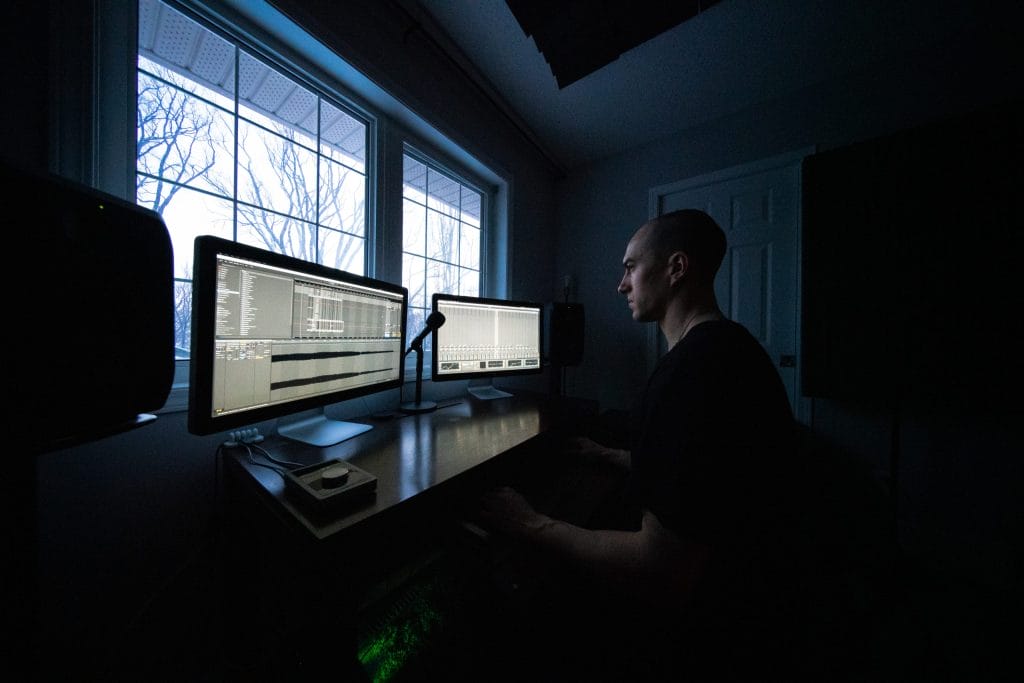
Experiment. Reach beyond preconceived limitations of sounds and see what’s possible.
Quality over quantity. Wok hard to make a few elements sound as excellent and unique as possible, rather than continuously creating new recordings in order to fill a space.
Repurpose sounds. By taking existing elements and finding ways to re-purpose, re-adapt, and re-work them into new forms, we effectively create a more cohesive sonic world. Whereas when we constantly create and use new sounds, elements may not jive and vibe as well as when they are from the same origin.
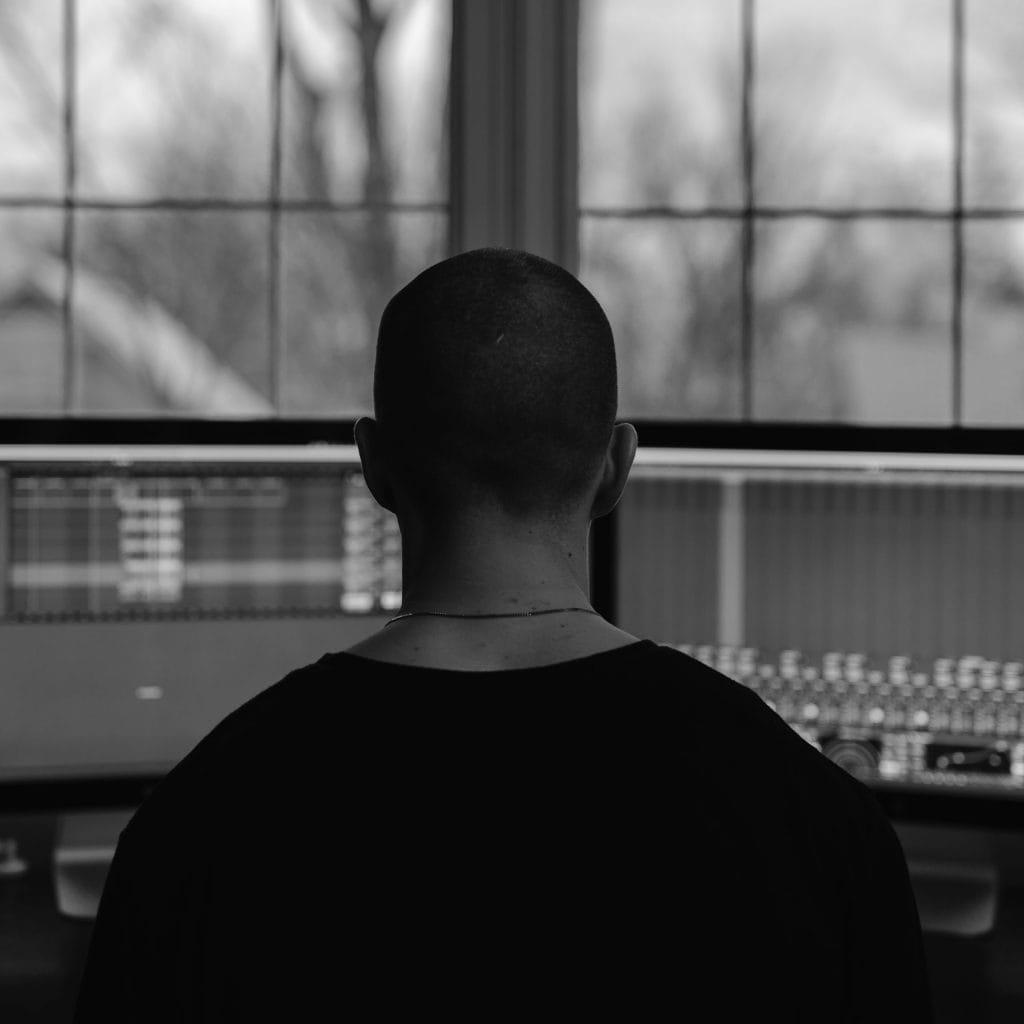
Break rules. There are certain principles when it comes to music production that are tried and true, and run deep in the history of the industry, but let’s not be afraid to break these rules, and even turn them on their head. Some of the most unique and interesting art can be created in the most unorthodox of ways.
Trust your gut. Ultimately it only has to make sense to you. If you think something sounds good, or just ‘feels’ right, pay attention to that feeling. Look less at the numbers and more to what the emotive energy of the music says to you.
The post How It Was Made: FACTOR EIGHT – Waiting For The End appeared first on Magnetic Magazine.



